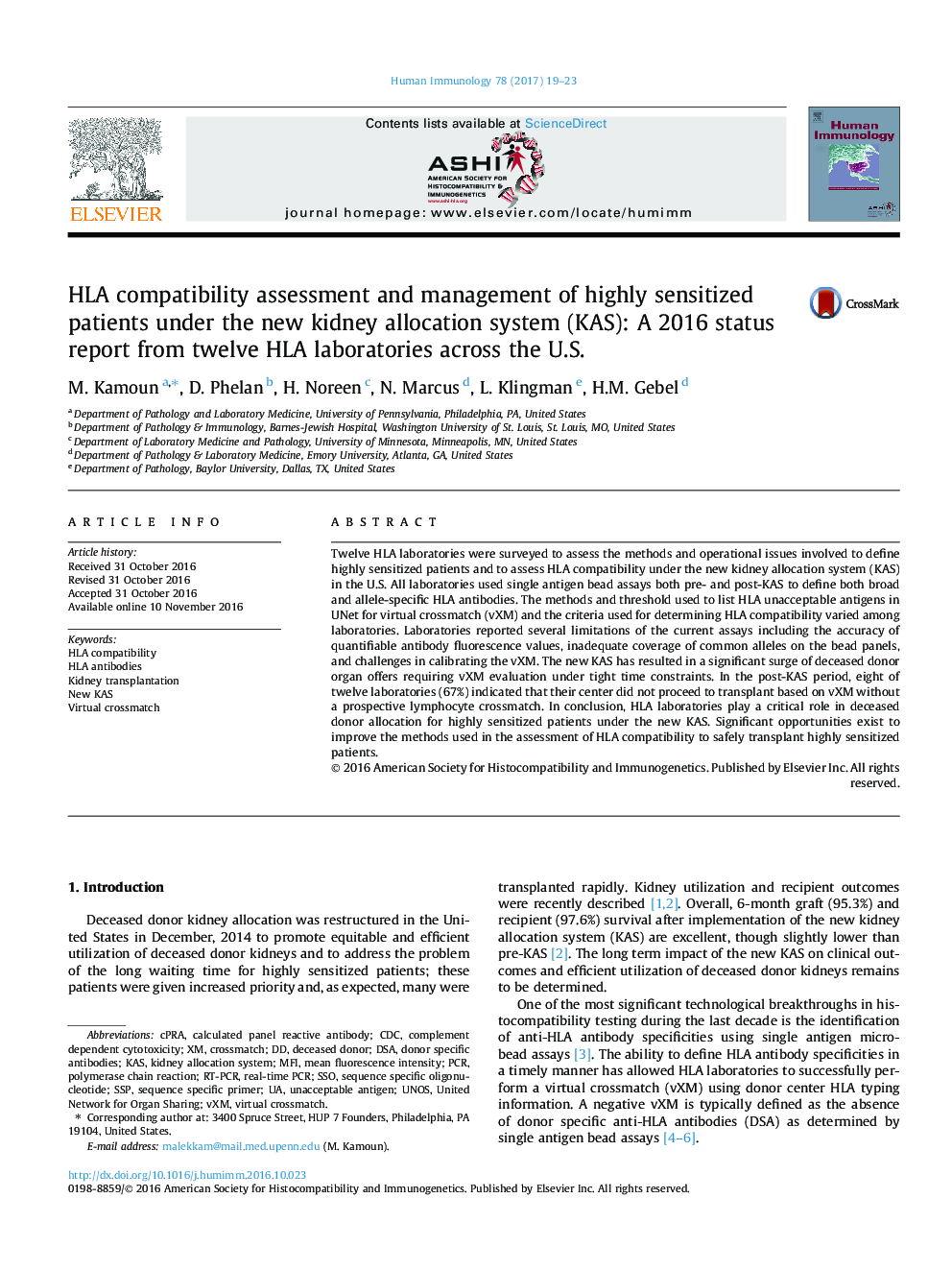| Article ID | Journal | Published Year | Pages | File Type |
|---|---|---|---|---|
| 5666422 | Human Immunology | 2017 | 5 Pages |
Twelve HLA laboratories were surveyed to assess the methods and operational issues involved to define highly sensitized patients and to assess HLA compatibility under the new kidney allocation system (KAS) in the U.S. All laboratories used single antigen bead assays both pre- and post-KAS to define both broad and allele-specific HLA antibodies. The methods and threshold used to list HLA unacceptable antigens in UNet for virtual crossmatch (vXM) and the criteria used for determining HLA compatibility varied among laboratories. Laboratories reported several limitations of the current assays including the accuracy of quantifiable antibody fluorescence values, inadequate coverage of common alleles on the bead panels, and challenges in calibrating the vXM. The new KAS has resulted in a significant surge of deceased donor organ offers requiring vXM evaluation under tight time constraints. In the post-KAS period, eight of twelve laboratories (67%) indicated that their center did not proceed to transplant based on vXM without a prospective lymphocyte crossmatch. In conclusion, HLA laboratories play a critical role in deceased donor allocation for highly sensitized patients under the new KAS. Significant opportunities exist to improve the methods used in the assessment of HLA compatibility to safely transplant highly sensitized patients.
